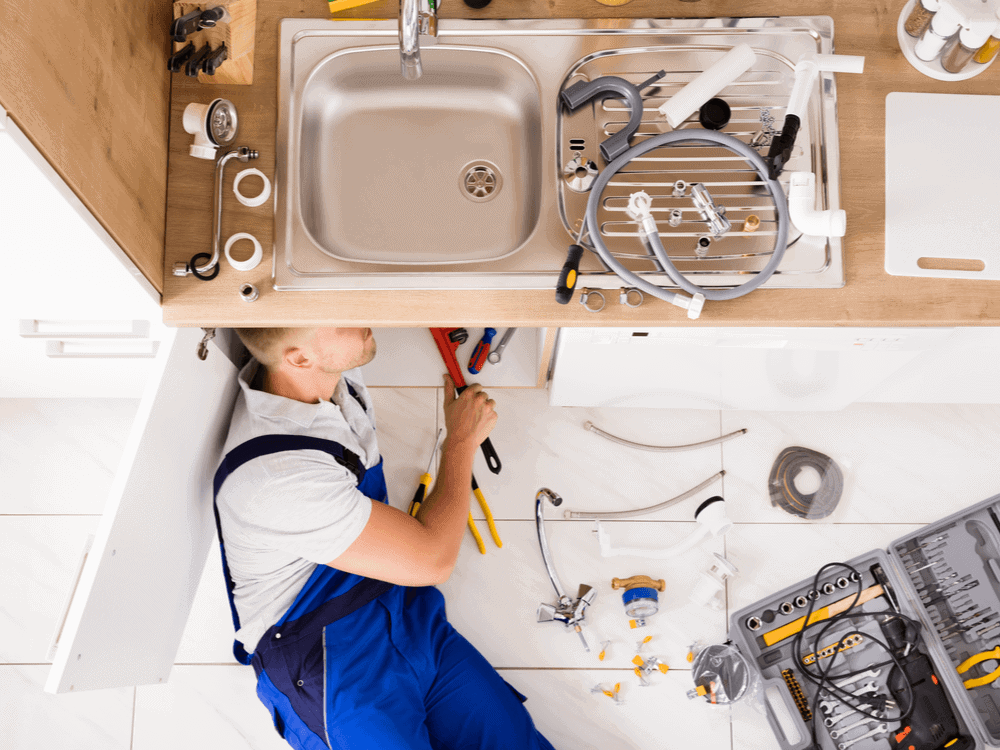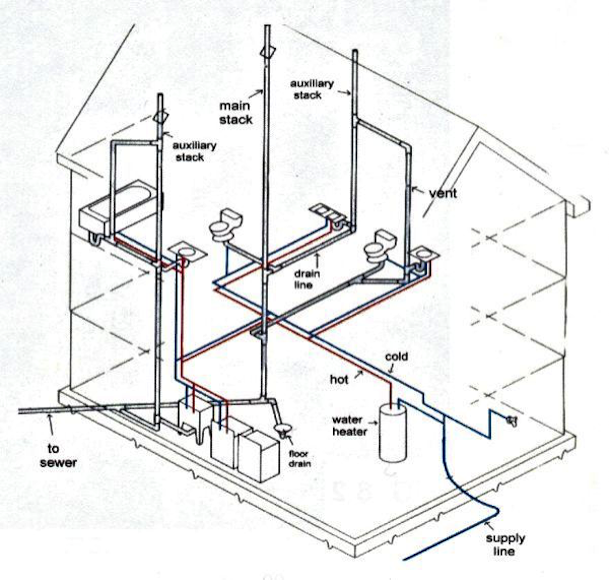Just how do you actually feel on the subject of The Inner Workings of Your Home's Plumbing?

Understanding how your home's plumbing system works is essential for every property owner. From providing clean water for drinking, cooking, and showering to securely eliminating wastewater, a properly maintained pipes system is vital for your family members's health and wellness and comfort. In this extensive guide, we'll explore the detailed network that comprises your home's plumbing and deal suggestions on maintenance, upgrades, and taking care of usual problems.
Introduction
Your home's pipes system is greater than just a network of pipes; it's a complex system that guarantees you have accessibility to clean water and reliable wastewater elimination. Understanding its elements and how they interact can help you protect against expensive repairs and make sure every little thing runs smoothly.
Standard Components of a Pipes System
Pipes and Tubes
At the heart of your plumbing system are the pipes and tubes that bring water throughout your home. These can be made of numerous materials such as copper, PVC, or PEX, each with its advantages in terms of toughness and cost-effectiveness.
Fixtures: Sinks, Toilets, Showers, and so on.
Fixtures like sinks, toilets, showers, and tubs are where water is utilized in your house. Comprehending how these components connect to the pipes system helps in detecting troubles and planning upgrades.
Shutoffs and Shut-off Points
Shutoffs control the circulation of water in your pipes system. Shut-off shutoffs are important throughout emergencies or when you require to make repair work, permitting you to separate parts of the system without disrupting water flow to the whole house.
Water System
Main Water Line
The primary water line links your home to the metropolitan supply of water or an exclusive well. It's where water enters your home and is distributed to different components.
Water Meter and Pressure Regulatory Authority
The water meter steps your water use, while a pressure regulator makes sure that water flows at a risk-free stress throughout your home's plumbing system, avoiding damage to pipes and components.
Cold Water vs. Warm water Lines
Recognizing the distinction in between cold water lines, which supply water directly from the primary, and warm water lines, which carry heated water from the hot water heater, helps in fixing and preparing for upgrades.
Water drainage System
Drain Pipeline and Traps
Drain pipelines bring wastewater far from sinks, showers, and commodes to the sewage system or septic system. Catches protect against sewage system gases from entering your home and also trap particles that might trigger blockages.
Air flow Pipelines
Ventilation pipes allow air into the water drainage system, protecting against suction that can reduce water drainage and cause traps to vacant. Appropriate air flow is essential for maintaining the honesty of your pipes system.
Importance of Proper Drain
Ensuring appropriate drain prevents back-ups and water damages. Consistently cleaning up drains pipes and maintaining catches can prevent expensive repairs and extend the life of your plumbing system.
Water Heating System
Types of Hot Water Heater
Hot water heater can be tankless or typical tank-style. Tankless heating systems warm water on demand, while tanks store heated water for prompt usage.
How Water Heaters Connect to the Pipes System
Comprehending how hot water heater connect to both the cold water supply and warm water circulation lines assists in identifying issues like insufficient hot water or leaks.
Upkeep Tips for Water Heaters
Consistently purging your water heater to remove debris, examining the temperature setups, and checking for leaks can expand its life expectancy and improve power performance.
Typical Pipes Problems
Leakages and Their Causes
Leakages can happen because of maturing pipes, loose fittings, or high water pressure. Addressing leaks without delay avoids water damages and mold development.
Obstructions and Blockages
Clogs in drains pipes and bathrooms are commonly caused by purging non-flushable things or an accumulation of oil and hair. Using drainpipe displays and being mindful of what drops your drains pipes can prevent obstructions.
Signs of Plumbing Troubles to Watch For
Low water pressure, slow-moving drains, foul odors, or abnormally high water expenses are indicators of potential pipes issues that should be resolved promptly.
Plumbing Upkeep Tips
Regular Evaluations and Checks
Arrange yearly pipes inspections to catch concerns early. Look for signs of leaks, corrosion, or mineral accumulation in taps and showerheads.
Do It Yourself Upkeep Tasks
Easy tasks like cleansing tap aerators, looking for bathroom leakages making use of color tablet computers, or shielding revealed pipes in cool climates can prevent significant pipes concerns.
When to Call an Expert Plumber
Know when a pipes issue calls for professional experience. Attempting complex repair services without proper knowledge can cause more damage and higher repair service prices.
Upgrading Your Plumbing System
Reasons for Updating
Updating to water-efficient components or replacing old pipes can improve water high quality, minimize water costs, and boost the worth of your home.
Modern Plumbing Technologies and Their Advantages
Discover modern technologies like clever leakage detectors, water-saving commodes, and energy-efficient water heaters that can save cash and decrease environmental effect.
Expense Factors To Consider and ROI
Compute the upfront costs versus long-lasting financial savings when considering pipes upgrades. Many upgrades pay for themselves through minimized energy costs and less repair work.
Environmental Influence and Preservation
Water-Saving Components and Appliances
Setting up low-flow taps, showerheads, and commodes can substantially reduce water use without sacrificing performance.
Tips for Minimizing Water Use
Straightforward behaviors like repairing leakages quickly, taking much shorter showers, and running complete lots of washing and dishes can conserve water and lower your utility costs.
Eco-Friendly Plumbing Options
Consider sustainable pipes products like bamboo for floor covering, which is durable and green, or recycled glass for countertops.
Emergency Readiness
Actions to Take During a Pipes Emergency
Know where your shut-off shutoffs lie and exactly how to shut off the supply of water in case of a burst pipe or major leak.
Importance of Having Emergency Situation Calls Useful
Maintain get in touch with info for neighborhood plumbings or emergency solutions easily offered for fast reaction throughout a pipes dilemma.
DIY Emergency Fixes (When Suitable).
Momentary fixes like using duct tape to spot a dripping pipeline or placing a container under a trickling tap can lessen damages up until a professional plumber shows up.
Verdict.
Comprehending the anatomy of your home's pipes system encourages you to keep it efficiently, conserving time and money on repair work. By adhering to regular maintenance routines and remaining informed about modern-day plumbing technologies, you can guarantee your pipes system runs effectively for several years to come.
HOW YOUR PLUMBING SYSTEM WORKS
Which Pipes Do What?
- Blue lines = fresh water supply entering the building
- Red lines = hot water supply entering the building
- Grey lines = pipes carrying waste away from the building and venting pipes carrying gases away from the building (through the roof)
YOUR MAIN PLUMBING SYSTEMS
There are two main plumbing systems that support your home s basic plumbing needs one that brings clean water into your home, and one that sends dirty water away from your home. Connected to the toilet, bath, shower, and other faucets in your home, these two systems keep your water flowing in the right directions.
ACCESSING FRESH WATER
Fresh and clean water is brought into your home through the main water supply line . Filtered through one pipe, this water is pressured to flow into the various fixtures in your home at any given time.
This water can be sourced from a well located on your property, a pond or river (mostly cottages), or, as in most cases, from the city s municipal water treatment centre. However, it is important to note that water that is untreated, such as the water siphoned from ponds or rivers, may not be safe to drink. Personal water supplies always need to be treated for hardness and contaminants before consumed.
MUNICIPAL WATER SUPPLIES
- Improve taste and odour
- Remove sediment
- Eliminate hardness
- Reduce chlorine
COLD WATER SUPPLY VS. HOT WATER SUPPLY
Cold water flows into your home or building through the service line, which then distributes hot or cold water to your fixtures. This line is most commonly run through a central column that runs floor to floor. Hot water runs in short and straight pipes as the longer the pipeline, the more heat that will be lost in the transfer. Having shorter pipes also allows residents to access hot water more quickly.
WASTE WATER SYSTEM
Your wastewater system is divided into two parts pipes that send wastewater away from your home and venting pipes that send sewer gas away from your home. Sewage water travels through pipes that flush the water and waste towards local sewers that are operated and managed by your city or town. Most sewer systems rely on gravity to move the wastewater to where it needs to go.
The further away from your toilet or sink, the larger wastewater pipes become. This allows for waste to be disposed of from various parts of your home or business at once without pipe blockages. The angle and flow of these pipes are also essential for keeping your waste pipes clear of build up.
https://harrisplumbing.ca/how-your-home-plumbing-system-works/

I was shown that report on Exploring Your Homes Plumbing Anatomy through an acquaintance on our other blog. Loved our post? Please share it. Help somebody else discover it. Thanks a lot for your time. Don't hesitate to pay a visit to our site back soon.
Here
Comments on “A Closer Look at The Layout of Your House's Plumbing System”